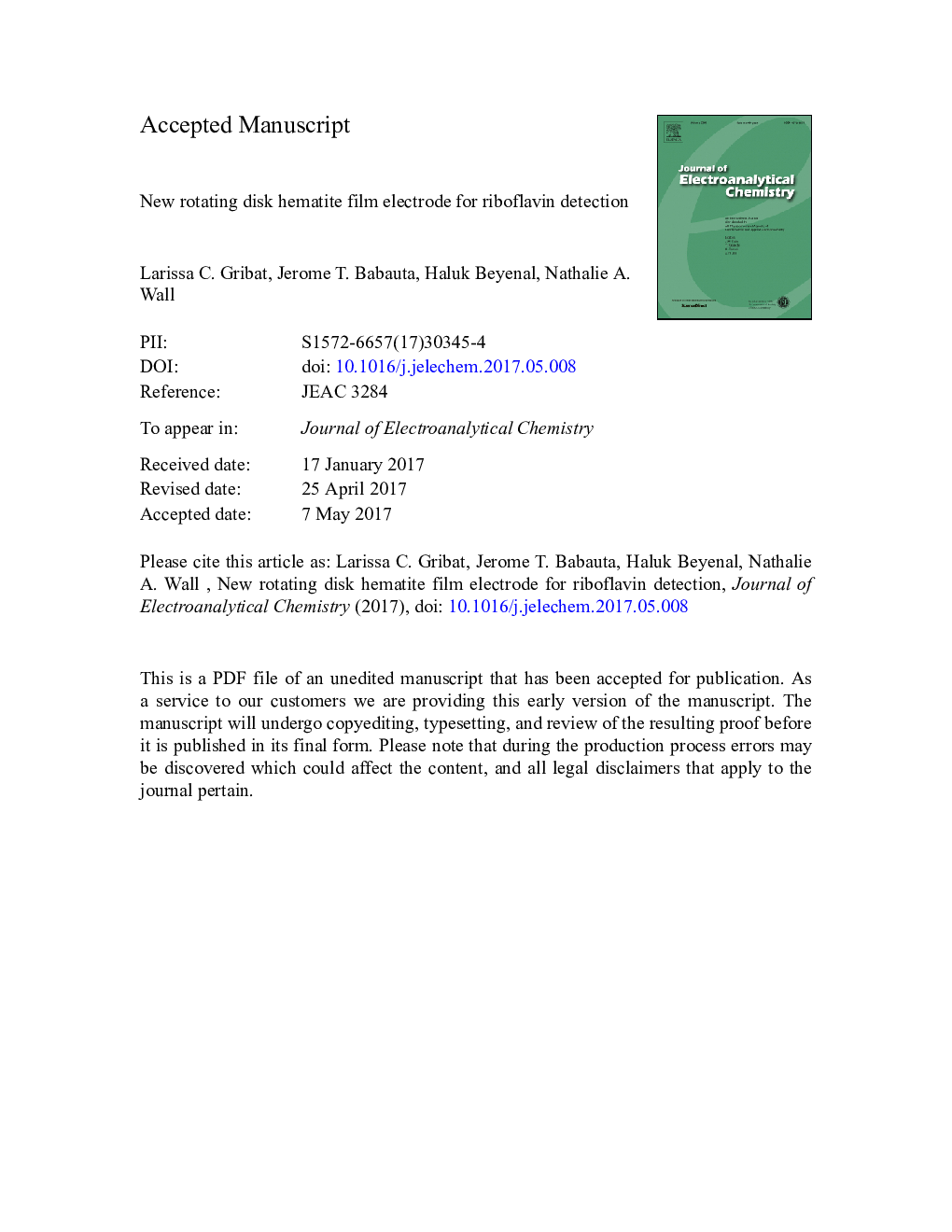| Article ID | Journal | Published Year | Pages | File Type |
|---|---|---|---|---|
| 4907841 | Journal of Electroanalytical Chemistry | 2017 | 20 Pages |
Abstract
The motivation for this work was to develop and test a hematite (α-Fe2O3) film electrode for the detection of riboflavin using a less common preparation with rotating disk electrode linear sweep voltammetry. Two types of hematite electrodes were prepared, with a differential method and a one-step method (quicker preparation), and bare glassy carbon electrodes were used for comparison. The differential and one-step hematite electrodes were tested for cyclic voltammetry stability. Colloidal hematite (α-Fe2O3) was synthesized from iron nitrate nonahydrate from a two-line ferrihydrite transition and characterized with X-ray powder diffraction and Mössbauer spectroscopy. Both hematite film electrodes were prepared using a three-electrode electrochemical cell and rotating disk voltammetry. Rotating disk hematite electrode stability was demonstrated for up to 1000 cyclic voltammetry scans. A single use of the rotating disk hematite film electrode was shown to demonstrate quantitatively the detection of riboflavin reduction peaks with optimized differential square wave voltammetry. The limits of detection for the glassy carbon and rotating disk hematite film electrodes for riboflavin are 0.0028 ± 0.0009 mM and 0.0084 ± 0.0009 mM, respectively. The detection linear range for the glassy carbon and rotating disk hematite film electrodes is 0.0013-0.1 mM riboflavin. The sensitivities of the one-step and differential rotating disk hematite film electrodes are 0.216 ± 0.001 μA/μM and 0.27 ± 0.02 μA/μM riboflavin, respectively. The sensitivity of the bare glassy carbon electrode is 0.144 ± 0.003 μA/μM riboflavin.
Keywords
Related Topics
Physical Sciences and Engineering
Chemical Engineering
Chemical Engineering (General)
Authors
Larissa C. Gribat, Jerome T. Babauta, Haluk Beyenal, Nathalie A. Wall,
